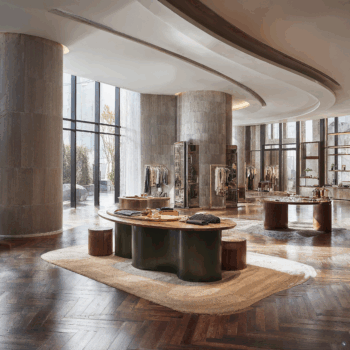
Prioritizing occupant needs in design.
When creating spaces, it is important to focus on the people who will eventually occupy the space. Human-centric design aims to meet the needs and preferences of the individuals using the space, ensuring comfort, functionality, and well-being. However, it is equally vital to understand how the materials that make up that space are sourced and made. This consideration extends beyond aesthetics and usability to encompass the ethical and environmental impacts of material production.
The United Nations Global Compact is a voluntary corporate sustainability program with initiatives that include the built environment. This initiative encourages material manufacturers to align their strategies and operations with ten universally accepted principles in human rights, labor, environment, and anti-corruption. These principles guide companies in implementing ethical practices throughout their supply chains, from raw material extraction to manufacturing and distribution.
By committing to these principles, companies work towards integrating sustainability into their core practices, promoting responsible sourcing, production, and innovation. This commitment ensures that the materials used in construction and design are not only high-quality and durable but also ethically produced and environmentally friendly. For instance, companies may prioritize using recycled or renewable resources, reducing waste and energy consumption during manufacturing, and ensuring fair labor practices.
Implementing human-centric design combined with sustainable material sourcing has numerous benefits. It enhances the well-being of occupants by creating healthier and more pleasant environments. For example, using non-toxic materials improves indoor air quality, and incorporating natural elements like wood and stone can reduce stress and increase productivity. Moreover, sustainable practices contribute to the long-term viability of the environment, ensuring that natural resources are preserved for future generations.
Ultimately, human-centric design is not just about creating spaces that look good and function well; it is about making responsible choices that benefit both people and the planet. By focusing on the needs of occupants and the ethical sourcing of materials, designers and builders can create spaces that are truly sustainable, both socially and environmentally. This holistic approach ensures that the built environment contributes positively to the well-being of individuals and the health of our planet.
Looking to learn more about sustainable design check out our article about red list free textiles.







